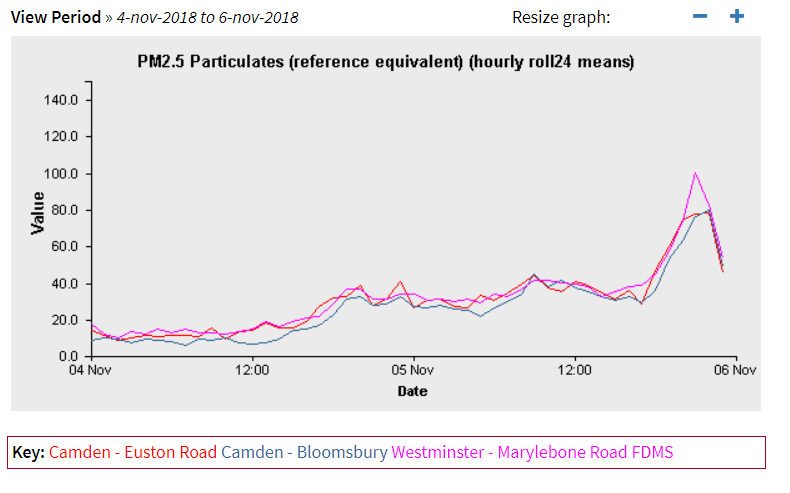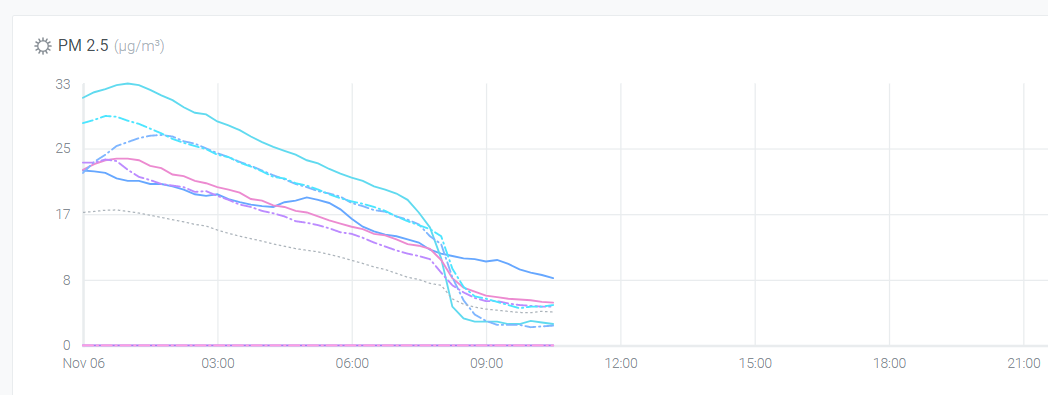Insights
Remember, remember… the effects of Bonfire night.
How our firework celebrations impact air quality.
It’s common knowledge that both the 5 November and the days leading up to it are peppered with bonfires and firework displays across the country.
As you wandered back from your local event this week, you probably saw large areas of the sky covered in smoke. So what does this mean for our air quality, and is it something we should be concerned about?
As an air quality consultant, the effect of bonfire night on the air quality of our towns and cities is something I wanted to investigate.
This year, we were able to use local authority monitoring data to quantify the increase in Particulate Matter (PM) on Monday night. PM is the main health-impacting pollutant of note when considering the impacts of solid fuel burning in bonfires and fireworks.
Particle sizes of 2.5 µg and below (PM2.5) are a serious concern to human health. As such, the national air quality objective for PM2.5 is 25 µg/m3, and concentrations should not exceed this level.
In the last decade there’s been a noticeable increase in PM2.5 concentrations and it’s becoming a worrying issue in built-up areas.
London levels.
Given its pivotal part in the genesis of Bonfire night, we decided it was fitting to look at London’s air quality. While it’s worth noting that London is an extreme example (it’s the UK’s most built-up urban environment, and therefore poor dispersion of pollutants results in a localised build up in concentration), it gives us a good picture of how drastically air quality can be affected.
PM2.5 is monitored across London and the average concentrations for 2018 so far are 15 µg/m3 and 11 µg/m3 (taken from two central London automatic monitoring sites at Euston Road and Bloomsbury).
These average concentrations are both comfortably below the national objective under ambient conditions.
However, the peak concentrations measured on Monday at 10pm were 79 µg/m3 and 80 µg/m3 for Euston Road and Bloomsbury respectively. This shows a huge increase in PM2.5 concentration in the area.
Better indoors?
It’s also worth considering the indoor effects on air quality too, as people are just as likely to be in their homes at this time. Using the indoor air quality monitors we have in our firm’s nearby London office, we can get an indicative idea of the change in PM2.5 concentration.
Compared to typical ambient levels, indoor PM2.5 concentrations temporarily increased by up to 600 percent after the bonfire night celebrations, with peak concentrations at 1am.
This considerable increase in concentration is in line with the increases shown outdoors at Euston Road and Bloomsbury. It’s clear to see that the impact to both outdoor and indoor air quality is worth being aware of, especially as it’s another significant addition to an individuals’ exposure to poor air quality over time.
But let’s not panic just yet.
While exposure to this level of PM2.5 concentration can be harmful, it’s important to note that the exposure time is very low. Concentrations both outdoors and indoors had also returned to ambient conditions by yesterday morning at 8am (6 November).

So, yes, there’s no doubt that poor air quality from bonfire night shouldn’t be overlooked, but we also know that this fun one-off night brings communities together and provides a great deal of joy to people. So, as with most things, consideration of the most vulnerable people is key, but for the vast majority it’s just about having a healthy awareness of what’s in the air we breathe.
